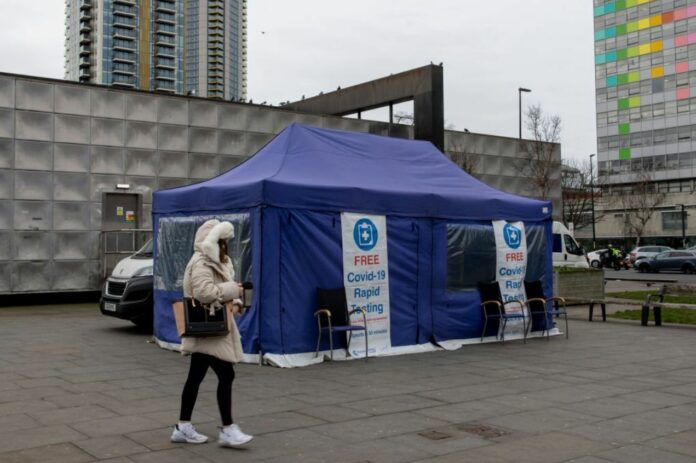Official data reveals a 27% increase in covid hospitalizations this week amid fears of a “tripledemic” slamming the failing NHS this winter.
On Monday, the number of infected patients admitted to English hospitals rose 27% to 600, the highest increase in two months.
Covid monitoring, universally perceived as the gold standard, also shows a rise in cases throughout the country after a sharp decline in previous weeks.
Due to the crisis in emergency care and an increase in individuals seeking treatment for Covid and the flu, NHS administrators have warned that this winter will be the service’s “most difficult winter ever.” Tens of thousands of medical workers going on strike and a staffing shortfall are expected to make things worse.
According to hospitalization data from NHS England, 639 people with Covid were admitted to the NHS on November 28, up from 503 the week before.
It’s the highest weekly increase in the last two months.
Compared to the previous week, admissions jumped 36% on October 4 and have been declining ever since.
On November 30, 4,964 patients who tested positive were occupying hospital beds, an increase of 8% from the previous week.
Similarly, patient numbers peaked at 10,688 on October 17 and have been steadily declining since.
However, it seems that the dip has reversed since the data for the previous few days indicate a little increase.
And on November 30, the number of Covid patients in critical care grew by 9% to 128.
Still, the numbers are far lower than they were at the beginning of the outbreak.
Additionally, not all of the patients are infected with the virus.
The highest daily admittance rate this year was 2,300 persons in March, with roughly 17,000 overall hospitalizations and 800 critical care unit admissions.
More than 4,000 people were admitted in a single day at the worst of the Covid crisis, 35,000 people were hospitalized, and 3,700 people were receiving critical care.
Among those 85 and above, the rate is 50.2 per 100,000.
According to statistics from the Office for National Statistics (ONS), Covid infections increased by 7.9% in the week ending November 21, after four weeks of decline.
Surveillance data from hundreds of random swabs showed 873,200 persons had the virus, up from 809,200 a week before.
That implies 1.48% of the population, or one in 65, had the virus last week.
Meanwhile, instances declined in Wales, where 39,600 persons (one in every 75) were infected, while the trend in Scotland (91,100) and Northern Ireland (28,900) remained unknown.
In England, the South West had the greatest rate of infection (1.8%), followed by the North East (1.7%), the South East (1.7%), and the East Midlands (1.6%).
The prevalence was highest in those 11 to 16 (1.9%) and 35 to 49 (49.3%).
Sarah Crofts, who is the deputy director for Covid’s infection survey analysis, said, “After a recent period of decline, we are once again seeing infections begin to rise in England.
“Cases have risen in West Midlands, London and across much of the South of England. We are also seeing a recent rise in positive cases amongst secondary school students, older teens and young adults.
“Though Wales has seen continued decreases in positive cases, the trend is uncertain for the rest of the UK.
“We will monitor the data closely in the build up to Christmas.”
BQ.1, an Omicron sub-variant, is now the prevalent strain in England, affecting 50.4 percent of infections, up from 39 percent a week before.
According to the UKHSA, another strain, BA.2.75 is on the rise.
“There is a new variant circulating – BQ1 – which is becoming the dominant variant and it seems likely that is going to drive further increases,” NHS England’s medical director Professor Stephen Powis said.
About six out of ten people over 50 have had an autumn booster shot. Among those aged 80 to 84, participation is greatest (81%) while it was lowest among those aged 50 to 54. (39 per cent).
According to UKHSA statistics from November 27, 80.8% of 80-year-olds, 81.1% of 75-79 year-olds, and 78.3% of 70-74 year-olds had got boosters.
If their previous Covid vaccination was at least three months ago, persons 50 and older may schedule an autumn booster dose.
Additionally, pregnant women, the immunocompromised, and those working in frontline health care may get doses.
Image credit: Hesther Ng/SOPA Images/LightRocket via Getty Images
